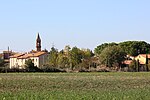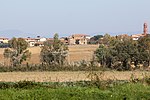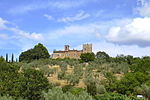The Battle of Lake Trasimene was fought when a Carthaginian force under Hannibal ambushed a Roman army commanded by Gaius Flaminius on 21 June 217 BC, during the Second Punic War. The battle took place on the north shore of Lake Trasimene, to the south of Cortona, and resulted in a heavy defeat for the Romans. War had broken out between Rome and Carthage early in 218 BC. Hannibal, ruler of the Carthaginian territories in south-east Iberia, marched an army through Gaul, crossed the Alps and arrived in Cisalpine Gaul (northern Italy) later that year. The Romans rushed reinforcements north from Sicily but were badly defeated at the Battle of the Trebia.
The following spring the Romans positioned an army on each side of the Appenine Mountains, but were surprised when a Carthaginian army more than 50,000 strong crossed the range by a difficult but unguarded route. The Carthaginians moved south into Etruria, plundering, razing the villages and killing all adult males encountered. Flaminius, in charge of the nearest Roman army, set off in pursuit. Hannibal arranged an ambush on the north shore of Lake Trasimene and trapped the Romans. With the Carthaginians attacking unexpectedly from the flank and the rear, possibly in poor visibility, there was no chance for the Romans to form even a rudimentary fighting line and they were defeated after three hours hard fighting. The trap failed to close on the 6,000 Romans at the front of the column, who escaped; later in the day they were surrounded by pursuing Carthaginians and surrendered. Thus all 25,000 Romans in Flaminius's army were killed or captured. This destruction of an entire army as a result of an ambush by another army is widely considered a unique occurrence. Several days later the Carthaginians wiped out the entire cavalry force of the second Roman army, who were not yet aware of the earlier disaster.
The Carthaginians then marched towards southern Italy in the hope of winning over some of the ethnic Greek and Italic city-states. News of the defeat caused a panic in Rome and led to the election of Quintus Fabius Maximus Verrucosus as dictator. Impatient with his Fabian strategy of avoiding major battles, the next year the Romans elected Lucius Paullus and Gaius Varro as consuls. These more aggressive commanders engaged Hannibal at the Battle of Cannae in 216 BC, resulting in a third and even worse disaster for Rome; it was followed by thirteen more years of war.










